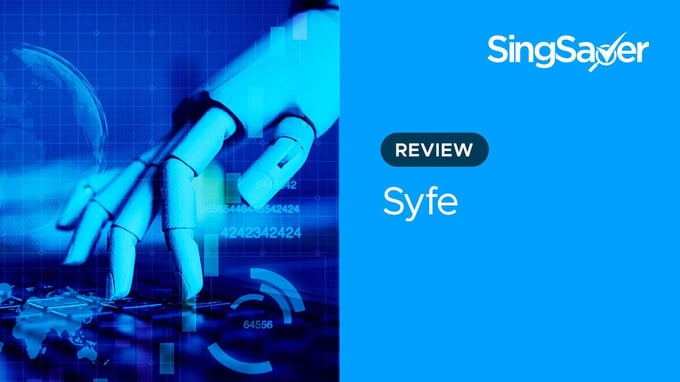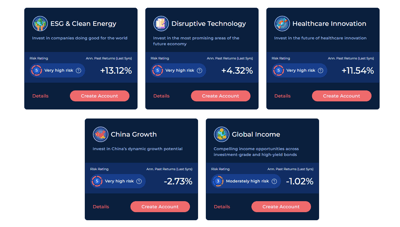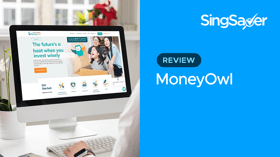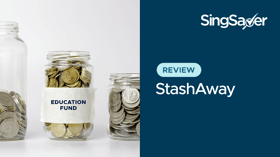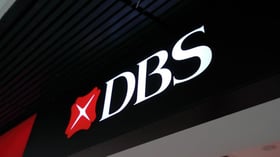Among the many robo-advisors out there, Syfe stands out with its unique portfolios that cater to specific investment objectives and preferences. Here’s everything you need to know about it.
Best investment platforms on SingSaver
Tiger Brokers | Syfe | City Index | Stashaway | POEMS | SAXO | Interactive Brokers | moomoo | Endowus | IG Trading | CMC Markets | ProsperUs | Webull
Changes brought about by COVID-19 have paved the way for the uptake of digital wealth management services. Also known as robo-advisors, these automated investment platforms are an easy and fuss-free way for individuals to start their wealth accumulation journey.
Even Singapore’s own trifecta of banks have got in on the action, via the DBS digiPortfolio, OCBC RoboInvest, and UOB UTRADE Robo platforms.
Dhuv Aurora, Founder and CEO of Syfe, shared that the robo-advisor has been seeing more interest from an older segment of the population who have typically been averse to using digital offerings.
Fortunately or otherwise, this trend won’t be dying out anytime soon, with the importance of hassle-free digital solutions being brought to the fore.
Syfe was launched in 2019 after two years of development work and wasted no time in expanding its lineup of investment portfolios. It now has eight solutions that users can choose from, aiming to cater to various experience levels and investment objectives.
Find out all you need to know about Syfe, its range of portfolios, and whether it’s the right platform for you.
Table of contents
How does investing with Syfe work?
Licensed by the Monetary Authority of Singapore (MAS) under a Capital Markets Services License, Syfe offers fully-managed investment portfolios with no minimum investment amounts or lock-in periods. This applies to all eight portfolios that it offers, so there’s no need to worry about mind-boggling terms and conditions.
Furthermore, Syfe’s portfolios come with fees that range from 0.35% to 0.65% p.a. of your total assets under management or total invested amount, whichever is higher. This management fee covers everything from portfolio monitoring to automatic rebalancing. This fee schedule also applies to any portfolio that you select except for Cash+, making things simple for users.
Speaking of portfolios, here’s a look at all eight that Syfe currently offers.
P.S Each one invests in a mix of exchange-traded funds (ETFs), so if you’re unsure of what these investment assets are, here’s a full guide to them.
Core portfolios
Core Equity100: Exposure to global equities
This portfolio is 100% allocated to global equities, with no exposure to other asset classes like cash or fixed income.
Through the equity ETFs that Syfe invests in, you gain exposure to over 1,500 companies across the globe.
One such ETF would be the iShares Core S&P 500 UCITS ETF. It tracks the S&P 500 index, which contains stocks in the USA like Microsoft and Visa. Then there’s the iShares MSCI EAFE ETF, which invests in large and mid-cap stocks that are not listed on US stock exchanges.
It doesn’t stop at just two equity ETFs though, because Core Equity100 invests in a total of 13.
Syfe uses their Smart Beta strategy for this portfolio, looking to outperform the index while keeping the same risk profile. To generate better risk-adjusted returns, your portfolio holdings are weighted based on factors such as growth, size of the stock and volatility.
A portfolio with a pure equity allocation offers the potential for higher returns, but there’s a corresponding level of risk too. For example, market downturns like the mass sell-offs in March 2020 would greatly affect Core Equity100.
That’s why this portfolio suits users who currently have holdings in other asset classes, such as commodities and fixed income investments.
Core Defensive
The other three Core portfolios are more akin to what a conventional robo-advisor would offer. They invest in a combination of ETFs across equities, gold, and bonds in varying proportions. In this instance, Core Defensive has the lowest risk out of the three.
As of 31 December 2023, the approximate asset allocation for Core Defensive would be 70.87% bonds, 18.95% equities, and 10.18% commodities. This means that your returns are stable and can better weather storms like pandemics and recessions.
ETFs that have the highest weightage in Core Defensive include iShares’ series of Treasury Bond ETFs and Vanguard’s Total International Bond Index Fund ETF Shares.
Although the Core portfolios are globally diversified as well, do note that this particular one has a heavy focus on USA. To be precise, over 70% of it is composed of US government bonds.
Core Balanced
The next Core portfolio would be Core Balanced. As the name suggests, it has a more balanced asset allocation than either Core Defensive or Core Growth and is a medium-risk portfolio.
As of 31 December 2023, the approximate asset allocation for Core Balanced would be 50.69% bonds, 37.83% equities, and 11.48% commodities, showing an opportunity for higher returns.
The 50.69% allocation to bond ETFs also helps to hedge against market risk that equities are exposed to.
ETFs that have the highest weightage in Core Balanced include the iShares 20+ Year Treasury Bond, SPDR Gold Shares, and iShares MSCI EAFE. Although the bond ETFs are still dominated by US Treasury Bond ones, it’s a different story for the equity ETFs.
The equity ETFs here are similar to what Core Equity100 invests in, which is a globally diversified mix.
Core Growth
The final Core portfolio would be Core Growth, boasting the second-highest risk level out of all four that Syfe offers in this lineup.
As of 31 December 2023, the approximate asset allocation for Core Growth would be 68.88% equities, 25.37% bonds, and 5.75% commodities. Returns will be much higher here as compared to Core Defensive and Core Balanced, but there’s also a large exposure to market volatility.
The inclusion of bond and gold ETFs provide diversification and sets this portfolio apart from Core Equity100.
ETFs that have the highest weightage in this portfolio include the iShares 20+ Year Treasury Bond, Invesco QQQ Trust Series1, and Invesco S&P 500 Equal Weight.
The latter two are interesting equity ETF choices, with the usual market cap-weighted S&P 500 ETF being eschewed for an equal weight one.
Start managing and saving money like a pro with SingSaver’s weekly financial roundups! We dole out easy-to-follow money-saving tips, the latest financial trends and the hottest promotions every week, right into your inbox. This is one mailer you don’t want to miss.
Sign up today to receive our exclusive free investing guide for beginners!
REIT+: Generating passive income through REITs
Syfe’s REIT+ portfolio hit the headlines when it was first launched and till today, no other robo-advisor offers a similar product. With over 40 REITs listed on the SGX, they’re best known for their high dividend yields and being cornerstones of dividend income portfolios.
That’s because they’re required to distribute at least 90% of their taxable income to shareholders.
Therefore, it’s clear what purpose REIT+ serves. Investors who either lack exposure to real estate or would like to start generating a passive income stream may find this portfolio appealing.
REIT+’s goal is to replicate the performance of the SGX iEdge S-REIT Leaders Index, which contains 20 of Singapore’s largest REITs.
In fact, you can choose between the following two options when investing in the REIT+ portfolio:
- 100% REITs: Purely tracks the SGX iEdge S-REIT Leaders Index
- REITs with risk management: Allows you to shield your portfolio against volatility by managing your risk with Syfe’s ARI methodology. This is done by including Singapore government bonds in your portfolio.
You can also choose to have dividends paid out quarterly to your bank account or have them reinvested automatically at no additional cost. With regards to dividends, the 100% REITs portfolio had an annual average return of 6.61% in 2023. REITs with risk management on the other hand, had a 5.00% dividend yield in 2023.
Select Themes: An easy way to invest thematically
There are five portfolios to choose from here and it’s no surprise what each one is going for from their names alone. These are:
- ESG & Clean Energy - Contains ETFs tracking businesses with sterling ESG credentials. These include the iShares MSCI EM ESG and Invesco Water Resources ETFs. Past returns clock in at 13.12% p.a. (over five years).
- Disruptive Technology - Contains ETFs tracking firms working on forward-looking technologies, including artificial intelligence and robotics. These include the Global X Robotics & AI and First Trust Cybersecurity ETFs. Past returns clock in at 4.32% (over three years).
- Healthcare Innovation - Contains ETFs tracking innovative companies in the healthcare sector. These include the SPDR Health Care Sector and ARK Genomic Revolution ETFs. Past returns clock in at 11.54% (over five years).
- China Growth - Contains ETFs tracking Chinese companies, with a focus on the technology and consumer sectors. These include the iShares China A Shares and WisdomTree China ex-State-Owned ETFs. Past returns clock in at -2.73% (over five years).
- Global Income - Contains ETFs tracking bonds across companies and nations, with a targeted exposure to China and emerging markets. These include the iShares JP Morgan EM Corporate Bond and iShares Short Duration High Yield Corp Bond ETFs. Past returns clock in at -1.02% (over five years).
These five solutions are highly specialised, appealing to folks who want to align their beliefs with their holdings or experienced investors who need to plug a specific gap in their portfolio. And Syfe hasn’t ruled out adding more portfolios to the current range in the future.
Alternatively, Syfe allows you to create your own thematic portfolio with Select Custom.
Select Custom: Create a personalised investment portfolio
Syfe’s Select Custom hands you the keys to the car, letting you select from across more than 100 ETFs to build a portfolio from the ground up. You can select a total of eight ETFs and adjust their weightages accordingly.
And if you’re wondering, you can indeed select just one ETF if you feel that Syfe’s fees are better as compared to transacting through your online brokerage.
These 100-odd ETFs were selected by Syfe’s investment team based on an unspecified screening methodology. However, rest assured that they’re from reputable asset management companies like Vanguard, Invesco, and Blackrock.
Because the full list is made available to you while you’re crafting your portfolio, you can always do your own due diligence.
However, the opportunity to create a customised investment portfolio is a double-edged sword. It’ll be tempting for beginner investors to succumb to heuristics and simply select eight ETFs that have been seeing amazing returns across a few years.
Fortunately, Syfe does provide advice along the way, which can be handy for advanced investors too.
Finally, there aren’t any strings attached to Select Custom. You pay the same fees as almost any other Syfe portfolio and you won’t need to make a minimum deposit either. It’s surprising that Syfe would offer this solution to any user instead of reserving it for their Private Wealth clients only.
Cash+: Earn up to 3.6% p.a.
Cash management accounts were introduced in 2020, going head to head with traditional savings accounts while their interest rates got hacked and slashed. Syfe’s own cash management solution grants users a way to grow their savings amidst the (still) low interest rate environment today.
With a projected return of up to 3.80% to 5.40% p.a. and S$0 management fees, Syfe Cash+ Flexi offers a decent yield as compared to most high-interest savings accounts. The underlying funds that make up Cash+ include:
- LionGlobal SGD Money Market Fund: 30%
- LionGlobal SGD Enhanced Liquidity Fund SGD Class I (Accumulation): 70%
With no lock-in period, no minimum deposit amount, no minimum balance required, and unlimited and free transfers, Syfe Cash+ Flexi appeals to people who want to do more with their cash, but also value liquidity.
Meanwhile Syfe Cash+ Guaranteed offers guaranteed returns of up to 3.80% p.a. and you can choose a term of your choice ranging from three, six, and 12 months.
Syfe Income+: Earn up to 6% p.a.
Syfe Income+ portfolios are constructed in partnership with PIMCO, a global leader in active fixed income management.
Using PIMCO's insights and best-in-class asset allocation guidance, Income+ aims to deliver optimal returns for your income needs while allowing you to access high-quality strategies at a fraction of the cost. Furthermore, there's no lock-in period or withdrawal penalties.
There are two variations of Syfe Income+, and both cater to different income needs:
- Income+ Preserve: catered for investors who want to generate steady regular income while seeking to preserve capital and minimising risk. This is achieved by investing in high-quality bonds such as US Treasuries and investment-grade corporate bonds
- Income+ Enhance: for investors seeking to generate higher current income and long term capital appreciation but at the cost of a higher risk. This involves investing in higher-yielding, lower-rated bonds such as high-yield corporate bonds and emerging market bonds
Features Income+ Preserve Income+ Enhance Objective Steady income with capital preservation Higher income with capital appreciation Monthly payout 4% to 4.5% p.a. 5% to 6% p.a. Top 5 sectors 14% - US gov related
28% - securitised
10% - investment grade
25% - non-USD developed
12% - emerging markets25% - US gov related
14% - securitised
16% - investment grade
14% - high yield
32% - emerging marketsPortfolio characteristics Yield to maturity - 6.44%
Duration (years) - 4.64
Credit quality - A+
Beta to S&P 500 - 0.12Yield to maturity - 8.22%
Duration (years) - 4.14
Credit quality - A-
Beta to S&P 500 - 0.22Risk rating (Syfe) Low Moderately low
Income+ portfolios also come with a special optimisation feature that allows you to adjust your portfolio allocations with recommendations from Syfe. These are according to PIMCO's forward looking views on the market based on credit spreads, yields, and economy forums to identity the most attractive investments.
Syfe will make these recommendations twice a year, and clients will have a choice to accept the recommendations. Those who do will have their portfolio allocations adjusted to the latest target asset allocation guidance by Syfe, while those who don't can continue with their current asset allocations.
Note that the minimum investment amount is S$5,000. While the income you receive is automatically reinvested by default, you can choose to receive monthly payouts to your designated bank account.
Syfe’s fees and charges
As mentioned above, Syfe charges an annual management fee that ranges from 0.35% to 0.65% of your total investment amount or assets under management, whichever is higher.
However, there’s no management fee levied for Cash+ portfolios due to the purpose they serve and inherently lower returns.
Here’s the full fee schedule for Syfe, based on either your total investment amount or assets under management:
- S$0 - S$19,999 (Syfe Blue): 0.65% p.a.
- S$20,000 - S$99,999 (Syfe Black): 0.5% p.a.
- S$100,000 - S$499,999 (Syfe Gold): 0.4% p.a.
- S$500,000 and above (Syfe Private Wealth): 0.35% p.a.
Apart from that, there aren’t any hidden charges that’ll have you combing through the terms and conditions. The other fees are charged to Syfe by the various stock exchanges, ETF managers, and online brokerages.
Syfe does not charge deposit or withdrawal fees and you’re not required to make a minimum initial deposit either, in Singapore dollars at least. US-dollar deposits are subject to a minimum of S$10,000 per transaction.
Finally, you’re not required to lock up your funds for a certain period of time.

SingSaver Exclusive Offer: Receive your choice of an Apple AirPods 3rd Gen with MagSafe charging case (worth S$274) or S$200 cash via PayNow when you open a Tiger Brokers account and fund at least USD 1,000. Valid till 2 May 2024. T&Cs apply.
Plus, enjoy prizes worth USD 3,600 when you deposit and trade with your Tiger Brokers account. Valid till 15 July 2024. T&Cs apply.
Pros and cons of Syfe
Pros
The main benefit of investing in Syfe would be the sheer number of portfolios that you can choose from. If you need a cash management account to tide you through a short period of time, Cash+ has you covered.
Syfe’s fee structure is easy to understand as well, having four tiers that range from 0.35% to 0.65% p.a. This is a competitive rate and there’s the added bonus of having greater access to wealth experts as you progress through the tiers.
You can also schedule a free consultation with a wealth expert before deciding whether to invest via this robo-advisor.
Cons
Despite the mind-boggling number of investment portfolios available for users to choose from, Syfe isn’t without its flaws. Firstly, this robo-advisor is still a greenhorn in the scene, launching only in 2019 and having received just two rounds of seed funding as of 2021.
Its portfolios are still unproven entities, but the same could be argued for almost every robo-advisor out there.
What is more worrying would be how frequent Syfe has been retooling its product lineup. Take the Global ARI portfolio for example, which was launched in July 2019 before getting axed in August 2021.
Two years was insufficient to determine whether its risk parity strategy worked and this move definitely did not instill confidence in existing and potential users.
A product removal is one thing, but portfolios were also added at a rapid pace. Here’s a brief timeline:
- REIT+ was introduced in March 2020
- Equity100 joined four months later
- In January 2021, Cash+ was launched
- Core Defensive, Balanced, and Growth were unveiled in March 2021
- August 2021 saw Equity100 joining the Core team
- In September 2021, the Select lineup was launched
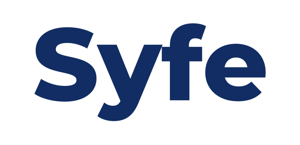
Who is Syfe best suited for?
Now that Select Themes and Custom have joined the party, it lets you take advantage of investment trends or ‘dollar-cost average’ into specific ETFs of your choice.
And like any other robo-advisor, Syfe makes it affordable for investors to stay invested. There’s no minimum investment amount and you aren’t charged whenever you make a deposit.
The only fee you need to keep in mind is the annual management fee, which is automatically deducted from a portion of cash in your portfolio that Syfe automatically sets aside.
Eligibility criteria
You’ll need to be at least 18 years old before you can start investing with Syfe. And if you’re working at an investment bank, you might need to speak with your compliance department to ensure that there are no conflicts of interest.
Start managing and saving money like a pro with SingSaver’s weekly financial roundups! We dole out easy-to-follow money-saving tips, the latest financial trends and the hottest promotions every week, right into your inbox. This is one mailer you don’t want to miss.
Sign up today to receive our exclusive free investing guide for beginners!
Syfe vs StashAway: Which is better?
Investment portfolios
Syfe has eight investment portfolios as compared to the four that StashAway offers. However, more doesn’t mean better, so let’s dig deep and perform a fair comparison. The easiest place to start would be with both robo-advisors’ cash management accounts.
Syfe’s Cash+ portfolio and StashAway Simple projected return is 3.8% to 5.4% and 3.7% p.a., respectively. Both portfolios do not charge any management fees and they provide rebates for fund-level fees.
Finally, both portfolios have similar underlying funds, but Cash+ adds the LionGlobal Short Duration Bond Fund into the mix.
For higher returns, Syfe’s Core, Defensive, and Balanced portfolios are the equivalent of StashAway’s General Investing solution.
Although returns are hard to judge given how young both robo-advisors are, StashAway’s advantage here would be letting you select the exact risk level from 6.5% to 36%.
Fees
When it comes to fees, fellow robo-advisor StashAway charges a wider range (0.2% - 0.8% p.a.) as compared to Syfe’s 0.35% - 0.65% p.a. However, Syfe arguably wins out in this aspect as StashAway’s fee schedule is much more complex.
Firstly, StashAway’s fee schedule has seven tiers as compared to four for Syfe.
Then there’s the way that StashAway levies its fees, opting for a stacked system rather than a tiered one that Syfe opts for. For example, your first S$25,000 invested will always be charged 0.8% p.a.
The next S$50,000 is then charged 0.7% p.a. Rinse and repeat until 0.2% p.a. is charged for amounts above S$1 million.
This isn’t as easy to grasp, even though StashAway might feature an absolute lowest fee that’s a fair bit lower than Syfe’s 0.35% p.a.
Other features and services
When it comes to educational materials to help beginner investors out, both robo-advisors have them in spades. StashAway’s set of articles and videos are built into its mobile app, so you can easily access a lesson or two while checking your portfolio out.
As for Syfe, every article, e-book, and workshop can be accessed on its website for free.
In fact, it goes one step further, letting users consult its in-house wealth experts. The level of access depends on how much you’ve invested, with Gold and Private Wealth clients having a dedicated wealth expert and advisor respectively.
On the other hand, StashAway offers a term life insurance policy underwritten by Prudential. Premiums range from S$115 to S$765 a year.

Syfe vs AutoWealth: Which is better?
Investment portfolios
AutoWealth has just one portfolio that invests in a mix of bond and equity ETFs while Syfe has eight different solutions. However, the proportion of bond to equity ETFs that comprises your AutoWealth portfolio depends on your investment horizon and risk appetite.
For example, a Risk Level 2 portfolio will see an allocation of 60% bonds and 40% equities.
If you’re wondering, AutoWealth does not invest in commodity ETFs because it believes that their downsides outweigh the diversification they provide.
AutoWealth’s flagship investment portfolio corresponds to Syfe’s Core Defensive, Balanced, and Growth solutions. However, the latter three invest in a gold ETF too, providing additional diversification for users.
Unfortunately, AutoWealth does not publish the exact list of ETFs it invests in, making it hard for potential users to make a comparison. All it reveals is that these ETFs are all listed on the NYSE and NASDAQ stock exchanges and that they’re diversified across sectors and geographies.
Fees
From the get-go, it’s clear that AutoWealth charges higher fees. It levies a flat annual management fee of 0.5% along with an annual US$18 platform fee as compared to Syfe’s all-in 0.35% to 0.65 p.a. annual management fee.
Once your investment amount or assets under management hits S$20,000, it’ll automatically be less costly to invest with Syfe.
What’s more, you’ll need to make a minimum initial deposit of S$3,000 for AutoWealth whereas Syfe has no such requirement.
Fees and charges aren’t the be all and end all when selecting a robo-advisor, but are still factors to consider because they have the potential to eat into your returns.
Other features and services
AutoWealth assigns every user a wealth manager. Furthermore, this level of access is identical across the board, no matter your portfolio size. Syfe has dropped the ball here as it grants full access to its wealth experts for Black-tier users and above.
Blue-tier users are given access to the robo-advisor’s in-house wealth experts for only the first month after signing up.

Syfe vs DBS digiPortfolio: Which is better?
Investment portfolios
DBS digiPortfolio offers up two distinct investment portfolios as compared to Syfe’s eight, called the Asia Portfolio and Global Portfolio. The former invests in ETFs listed on the SGX and the latter in ETFs listed on the LSE.
Although DBS does not specify the exact ETFs chosen, it does reveal that it invests only in bonds and equities.
Like StashAway and AutoWealth, the closest that DBS digiPortfolio’s Asia and Global Portfolios compare to would be Syfe’s Core Defensive, Balanced, and Growth portfolios.
However, the former does not invest in commodity ETFs, just like AutoWealth’s own solution. With regards to performance, it’ll take time because of how new the current iteration of the DBS digiPortfolio is.
The previous version used to invest in unit trusts and was available on DBS’ iWealth platform rather than its digibank app.
Fees
Syfe beats the DBS digiPortfolio hands down when it comes to fees and charges. No matter how much you invest in Syfe, you’ll still be paying less than the DBS digiPortfolio’s 0.75% annual management fee.
Despite the relatively higher fee, DBS has actually streamlined this as compared to the previous unit trust-based digiPortfolio.
Gone are the sales charges, platform fees, and switching fees that you used to incur in the past. Additionally, DBS is currently working on linking this version of its digiPortfolio to the DBS Multiplier account’s Investment category.
This allows you to grow your wealth and net a higher interest rate on your savings.
Do note that the Asia Portfolio requires a minimum investment of S$1,000 whereas the Global Portfolio requires US$1,000. However, subsequent top-ups aren’t subjected to any minimum or maximum amount, just like any other robo-advisor out there.
Other features and services
The biggest advantage of investing with DBS digiPortfolio would be how convenient it is, especially for current DBS customers. You can log in with your existing digibank details and set up a portfolio immediately.
Getting advice or assistance regarding DBS digiPortfolio is easy as well, considering that this robo-advisory feature is part of the bank’s suite of services.
There’s peace of mind as well, because you’re investing through Singapore’s largest bank rather than a fintech startup or even a bank’s subsidiary.

How do I open a Syfe account and fund it?
Opening a Syfe account is straightforward. You’ll select a portfolio type first (don’t worry, you can change this later on) before entering your full name and email address. From there, you’ll need to provide your personal details either via Singpass MyInfo or by manually filling in a form.
If you’re a Singaporean or Permanent Resident using the latter method, you’ll need to submit a photograph of the front and back of your NRIC only.
If you’re a Foreigner, you’ll need to submit a copy of either your passport, EP, S Pass, or work pass, and a copy of your latest bank statement, utility bill, tenancy agreement, or statement from the relevant government authorities.
Funding your account is equally straightforward, with several methods available for users. However, the fastest would be either PayNow or FAST. Telegraphic Transfer is available, ditto for payment services like Transferwise.

Read these next:
Robo Advisors Singapore: A Complete Guide
StashAway Review: Goal-Getting Investments Through ETFs
Endowus Review: Investing Your Cash, CPF And SRS Money At Low Fees
Robo-Investing vs DIY Investing: Which One Should You Choose?
Comparing The Returns & Fees Of The Top Robo-Advisors In Singapore
Similar articles
AutoWealth Review: ETF Investments With Straightforward Fees
Review Of digiPortfolio – DBS’ Robo Advisor
Are Robo Advisors Worth It? Here’s How To Decide
Best Cash Management Accounts In Singapore To Soup Up Your Savings (2024)
Comparing The Returns & Fees Of The Top Robo-Advisors In Singapore (2024)
StashAway Review: Goal-Getting Investments Through ETFs
DBS digiPortfolio: Overcome Investing FOMO The Easy Way
How Syfe Adapts To Any Investment Portfolio In 5 Ways







